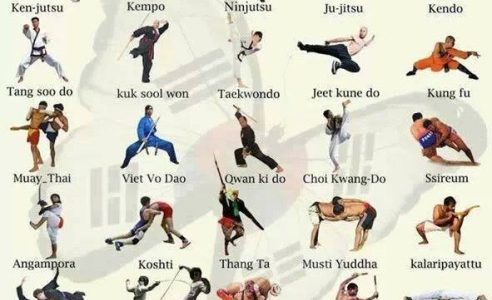Recognizing The Essential Distinctions Between Conventional Martial Arts And Modern Fight Sports
Recognizing The Essential Distinctions Between Conventional Martial Arts And Modern Fight Sports
Blog Article
Article Created By-Sherman Haagensen
When you consider martial arts, do you lean extra toward the typical methods or the modern-day combat sporting activities? Each path offers unique benefits and experiences, shaped by their ideologies and training techniques. Standard martial arts emphasize individual growth and discipline, while modern-day battle sports focus on competition and performance. Recognizing these distinctions can lead you in selecting the best method for your trip. But how do these differences show up in training and ideology?
The Approach and History Behind Typical Martial arts
While many people associate martial arts with physical battle, the viewpoint and background behind conventional martial arts run much deeper. how much do martial arts classes cost for kids 'll locate that these techniques highlight individual development, technique, and regard.
Stemming from old techniques, typical martial arts were typically created for Self-Defense and spiritual development. They embody principles such as equilibrium, consistency, and self-control, directing professionals past simple fighting skills.
As you train, you'll not just discover techniques but likewise acquire understandings right into the culture and values that formed these arts. The rituals and practices, often passed down with generations, cultivate a sense of community and belonging.
The Affordable Nature of Modern Battle Sports
Modern fight sporting activities have transformed the landscape of martial arts into an extremely affordable field, where athletes take on in a test of ability, technique, and endurance.
You'll see that competitions are frequently organized with strict policies and laws, making sure justice and safety and security. These events draw in huge target markets, sustaining the enjoyment and strength of matches.
Professional athletes educate rigorously, not just for physical prowess yet additionally for psychological toughness, knowing that every information counts in the ring. The adrenaline thrill throughout competitors is palpable, as fighters press their limits to declare triumph.
Followers appreciate the athleticism and virtuosity included, making modern-day battle sports a thrilling phenomenon that remains to evolve and captivate lovers around the world.
Training Methods and Methods: A Comparative Evaluation
The competitive ambience of modern-day fight sports demands cutting-edge training techniques that differ substantially from typical martial arts.
In modern-day training, you'll concentrate on particular strategies, sparring, and conditioning, commonly utilizing drills that mimic real battle situations. You'll see a focus on quantifiable performance and constant competition to evaluate your skills.
On the other hand, conventional martial arts focus on kinds, katas, and philosophical trainings, usually emphasizing technique and respect over competitors.
Training is normally much less extreme and may entail repeated technique as opposed to real-time sparring.
While both strategies construct skill and fitness, contemporary fight sports supply a more dynamic and versatile training setting, preparing you for immediate obstacles in the ring or cage.
simply click the following internet page that aligns with your objectives and rate of interests.
Verdict
In picking in between standard martial arts and modern-day combat sports, it actually comes down to what you value the majority of. If you're trying to find personal development, discipline, and a feeling of neighborhood, conventional arts might be your finest fit. But if you flourish on competitors and real-time challenges, modern-day fight sports could be the means to go. Inevitably, both courses supply unique advantages, so it's all about aligning your training with your individual objectives and rate of interests.
